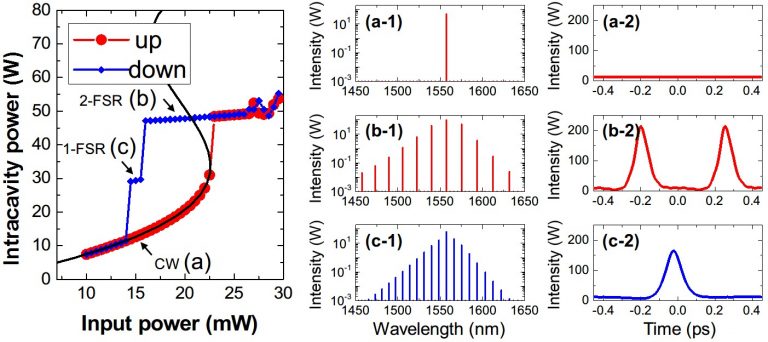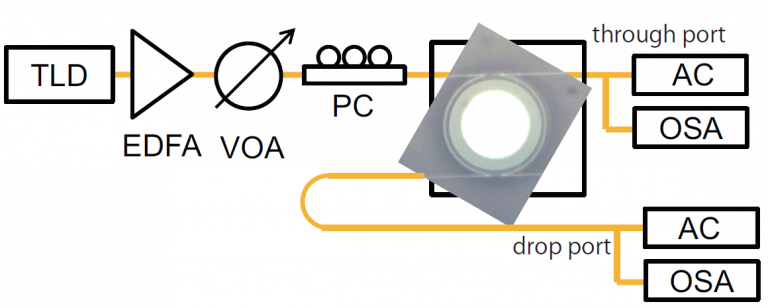Hysteresis property of high Q-value resonator response and microcomb generation mechanism
Research
Hysteresis property of high Q-value resonator response and microcomb generation mechanism
Toward the realization of a comb light source using a simpler system
Micro optical resonators with high Q-values can generate highly efficient nonlinear optical effects at low input power. If a microcomb (multi-wavelength light) can be generated from a single continuous light by continuously generating four-wave mixing, which is one of the nonlinear optical effects, a comb light source can be realized with a simpler system compared to conventional solid-state lasers and fiber lasers.
In this study, the generation mechanism of the microcomb is analyzed by the nonlinear Schrödinger equation, and it is clarified that the hysteresis property with respect to the input power determines the configuration of the microcomb. Figure 1 shows the simulation results. Figure 1 shows the simulation results. The state of the resonator is different when the input power is increased from low to high (red plot) or decreased from high to low (blue plot). This is called hysteresis. Characteristically, microcombs with 1-FSR spacing occur only when the power is lowered. Considering its application as a comb light source, it is important to obtain combs with 1-FSR spacing, and by considering hysteresis, we were able to clarify the generation mechanism. In particular, the fact that this can be achieved only by changing the input power is useful information for bringing microcomb systems into the visible and mid-infrared bands in the future.

Based on the simulation results, an experiment was conducted. The experimental setup was as follows. For the convenience of the experimental method, a situation was created in which the power was reduced from high to low, and the changes were recorded. The following figure compares the simulation and experimental data: The stair-step change in output power (blue line) indicates that the state in the resonator went through three transitions: 2-FSR, 1-FSR, and disappearance. Therefore, to achieve the 1-FSR state, the power change should be stopped when one change occurs. Comparison with the actual experimental data shows similar changes, proving the findings of the simulation.

This result is the first time that a highqThe mechanism of microcomb realized by using micro optical resonators was clarified, and the findings are useful for future application research.
A part of this work was supported by Grant-in-Aid for Scientific Research (K15H05429), Leading Graduate Program "Science for a Super-Mature Society", and SCOPE, Ministry of Internal Affairs and Communications.
- Categories
- 研究トピックス



